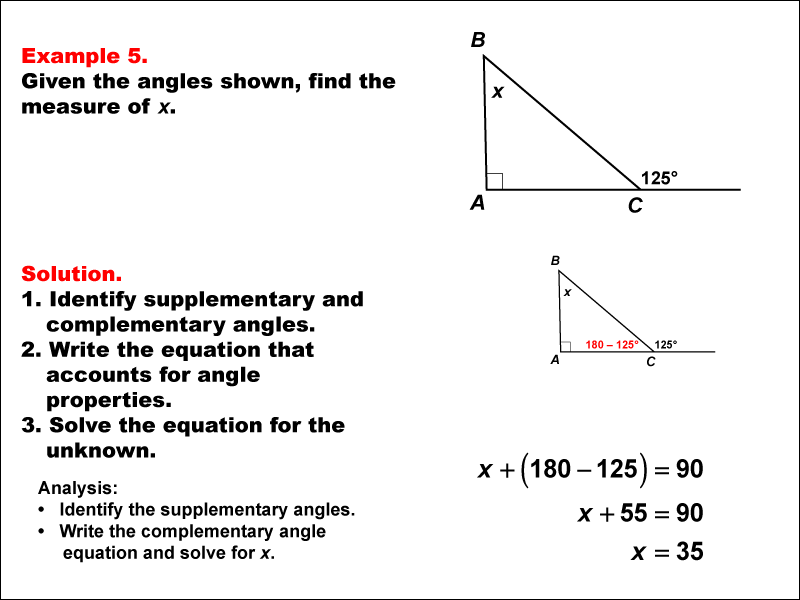
Display Title
Math Example--Solving Equations--Solving Equations Using Angle Properties: Example 5
Display Title
Solving Equations Using Angle Properties: Example 5

Topic
Equations
Description
This example demonstrates solving equations using angle properties, specifically focusing on complementary angles and the exterior angle theorem. Complementary angles are two angles that sum to 90°, while the exterior angle theorem states that an exterior angle of a triangle is equal to the sum of the two non-adjacent interior angles. In this scenario, we have a right angle (90°), an exterior angle (125°), and an unknown angle x. Using the exterior angle theorem, we can set up the equation: x + 90 = 125. To solve for x, we subtract 90 from both sides: x = 35°.
This method of solving angle equations relies on understanding multiple geometric properties and applying algebraic techniques. It's crucial to recognize various angle relationships in geometry, such as complementary angles, right angles, and the exterior angle theorem. By identifying these relationships, we can formulate equations and solve for unknown angles. This process not only reinforces geometric concepts but also strengthens algebraic problem-solving skills. In practical applications, such problems are essential in fields like surveying, navigation, and structural engineering, where understanding and calculating angles is crucial for accurate measurements and design.
For a complete collection of math examples related to Equations Using Angle Properties click on this link: Math Examples: Equations Using Angle Properties Collection.
| Common Core Standards | CCSS.MATH.CONTENT.HSG.CO.C.10, CCSS.MATH.CONTENT.HSA.CED.A.1 |
|---|---|
| Grade Range | 9 - 11 |
| Curriculum Nodes |
Algebra • Expressions, Equations, and Inequalities • Applications of Equations and Inequalities Geometry • Angles and Planes • Definition of an Angle |
| Copyright Year | 2022 |
| Keywords | angles, solving equations |